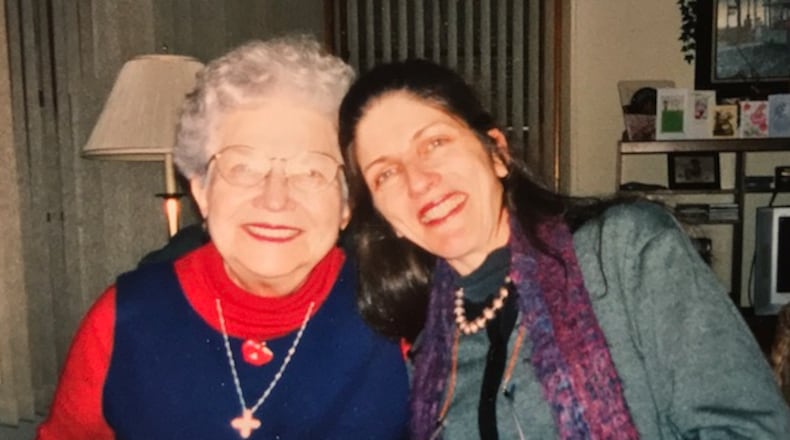Anisa Nyell Johnson has vivid memories of time spent in her grandmother’s kitchen in Philadelphia -- the Post-It notes in the pantry with reminders to buy more ingredients and the time spent shucking corn and snapping string beans while her mother worked long hours as a teacher.
"Nobody else was allowed in there except for me, and dinner revolved around what I wanted to eat," Johnson, who now lives in Acowrth, wrote in her story "My Two Mommies," which was recently shared on the website "Eat Darling Eat."
The ways that food brings mothers and daughters together is what inspired Aimee Lee Ball and Steve Baum to launch the site, which publishes stories written by women about connecting with their mothers in the kitchen.
“Food is such an interesting pathway for exploring relationships and personalities,” Ball said. “The mother-daughter relationship is one of the most complicated there is, and you can’t get a divorce.”
Starting out by soliciting stories from family friends and on Facebook over the past year, the site now has stories as varied as "Biting the Bullet," about a woman who comes out to her mother over pecan pie; "Magic Time" about a mother and daughter discussing their dreams in their kitchen in Japan; and "The Scotcheroo Lady," in which Atlantan Marjorie Kouns recalls her mother's famous Scotcheroo cookies.
“She refused to give out the recipe for the sticky, chewy Rice Krispies treats that were her ultimate calling card,” Kouns, a recent transplant to Atlanta, wrote. “But when she passed away, my brothers and I decided it was time to divulge the secret, and we put the recipe on the inside page of the program at her memorial service.”
Ball said the most effective stories are ones, whether sweet or sad, that present “an authentic experience or family dynamic, revealed across many cultures, with food as the "Trojan horse" for telling the story.”
Each story includes an accompanying recipe -- Kouns shares the Scotcheroo recipe, while Johnson’s is for Sweet Greens – that the writer made with her mother or was inspired by her mother.
Kouns, a recent Atlanta transplant from New York, said writing the story for Eat, Darling, Eat made her realize how lucky she and her siblings were to have homemade meals and treats.
The family gathered last year in Germany to make many of the dishes their mother, Joanna, was known for.
“It really felt like she was there with us,” Kouns said. “It brought back a lot of memories and good feelings . I think we took for granted how much mom made for us.”
Paying homage to her mother and grandmother inspired Johnson, an actress and producer, to share her story, even though she doesn’t consider herself a writer.
She developed the Sweet Greens recipe she shared with her story with influences from her mother and grandmother.
“My grandmother taught me to cook from the heart, and my mother taught me to be free and explore,” Johnson said. “I like to be like a scientist in the kitchen and experiment.
Ball, a journalist and author based in New York, was the first to share a story on the site. Her mother went from being "famous for her boiled water" to learning how to cook "because she loved her husband and daughter."
“Once she had a family to feed, she figured out basic meat-and-potato meals, eventually developing an eclectic, multi-cultural repertoire that included spareribs, veal Parmesan, matzo balls (at Passover seders, our relatives would greet her with “It’s Mrs. Ball and her matzo balls”), and those Mandelbrot,” Ball wrote.
In addition to written stories, Ball hopes to add audio, video and a section for commentary and conversation on Eat, Darling, Eat.
About the Author
The Latest
Featured



